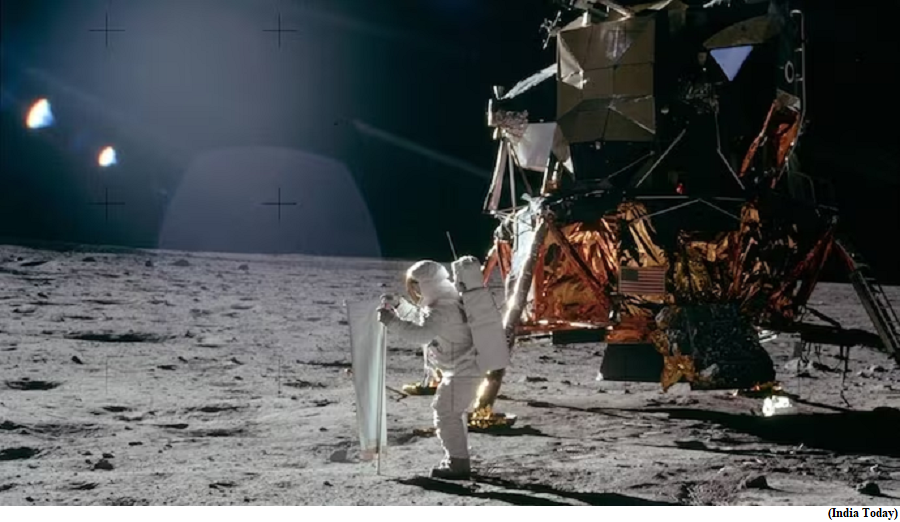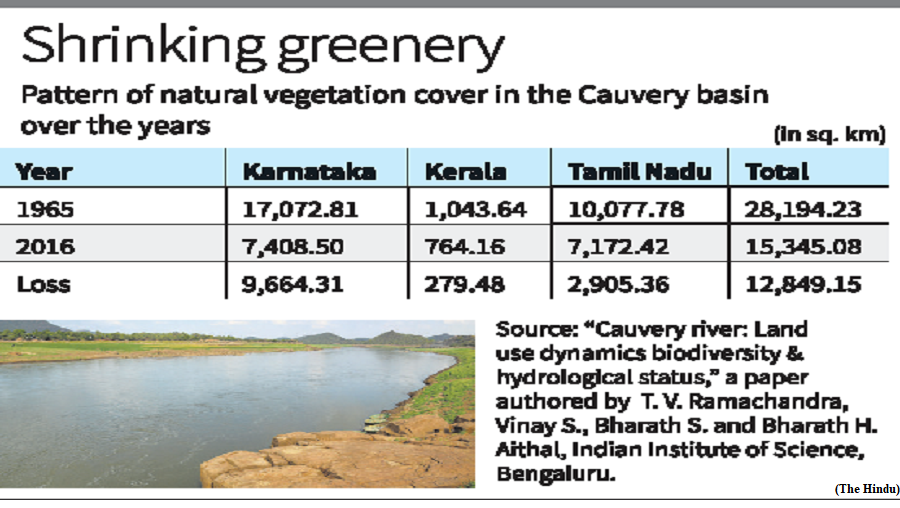US naval lab confirms water on Moon (GS Paper 3, Science and Technology)

Why in news?
- Researchers from the US Naval Research Laboratory (NRL) have detected solar-wind hydrogen in lunar soil samples, a discovery that could revolutionise future lunar exploration and the establishment of bases on the Moon.
- This finding suggests the presence of water on the Moon's surface, which is essential for supporting long-term human presence and further space exploration missions.
Space weathering:
- The groundbreaking research was conducted using Apollo lunar soil samples provided by a NASA-funded research mission.
- The NRL team is dedicated to understanding how lunar and asteroidal surfaces interact with the harsh conditions of space, known as space weathering.
- Their previous work had already confirmed the presence of solar wind helium within lunar soil grains.
Details:
- For the first time, scientists have demonstrated the detection of hydrogen-bearing species within vesicles in lunar samples.
- While other researchers have found water in planetary samples and NRL's team previously detected helium using advanced techniques like scanning transmission electron microscopy and electron energy loss spectroscopy, this is the inaugural report of in-situ hydrogen in lunar samples.
Way Forward:
- The implications of this discovery are vast, potentially aiding in the design of future missions that could utilize in-situ resources to support human and robotic presence on the Moon.
What is the controversy over Germany debt brake rule?
(GS Paper 3, Economy)
Why in news?
- Germany’s constitutional court recently ruled unlawful a government move to reallocate €60 billion, unused from the sums initially earmarked for the pandemic emergency, to a “climate and transformation fund” (KTF).

Details:
- The coalition government led by Chancellor Olaf Scholz’s centre-left Social Democrats (SPD) was in breach of the fiscal deficit limits enshrined in 2009 on two counts.
- The first was the move to channel underutilised allocations from one sector to another and the second, the roll-over of debt from one fiscal year to the next.
What is the debt brake rule?
- The debt brake rule, or the balanced budget rule, sets a cap on how much governments can borrow to finance various public projects.
- It restricts the federal government in Berlin from running a fiscal deficit in excess of 0.35% of Gross Domestic Product (GDP) and in effect prohibits the country’s 16 regions from any deficit spending whatsoever.
- The measure was enshrined into law in 2009 by the grand coalition government of the centre-right Christian Democratic Union (CDU), its sister party in the state of Bavaria the Christian Social Union (CSU) and the SPD, through an amendment to the German constitution.
- The budget brake is more or less the domestic version of the stringent borrowing and spending curbs built into the European Union (EU)’s Stability and Growth Pact (SGP) and the 2012 Fiscal Compact Treaty.
What was the legal challenge about?
- The plaintiffs to the dispute, the opposition CDU and CSU, contended that investments in climate change and energy transition were part of the long-term financing activities of the state.
- As such, these could not be funded from the emergency exemption provided in the debt brake, which was related specifically to COVID-19 relief.
- The government countered that the diverted money addressed the economic consequences of the pandemic, insofar as the investment shortfall could be linked to the economic impact from COVID-19.
What’s next?
- It is unclear, even after the Karlsruhe verdict, whether Berlin will moderate its stance on fiscal rectitude as EU leaders deliberate new proposals to customise debt and deficit rules specific to a country’s macro-economic parameters.
Cauvery basin lost nearly 12,850 sq. km of green cover
(GS Paper 3, Environment)
Why in news?
- Natural vegetation on nearly 12,850 sq. km of land in the Cauvery basin was lost in the 50 years from 1965 to 2016, as per the Indian Institute of Science (IISc), Bengaluru.

Key Highlights:
- Karnataka has lost much more than any other State in the basin. It accounts for three-fourths of the lost cover, while Tamil Nadu’s share is around one-fifth.
- The natural-vegetation cover went down by around 46% all these years.
- The quantum of reduction of dense vegetation was 35% (6,123 sq. km) and that of degraded vegetation, 63% (6,727 sq. km).
Worst affected areas:
- Areas that suffered adverse changes in the extent of forest cover include the Brahmagiri Wildlife Sanctuary, Bandipur National Park, Nagarhole National Park and the Cauvery Wildlife Sanctuary.
- In respect of the Bannerghatta National Park, the moist deciduous forest area, which was about 50% in 1973, stood at 28.5% in 2015 due to “anthropogenic pressure” on the National Park and its environs.




